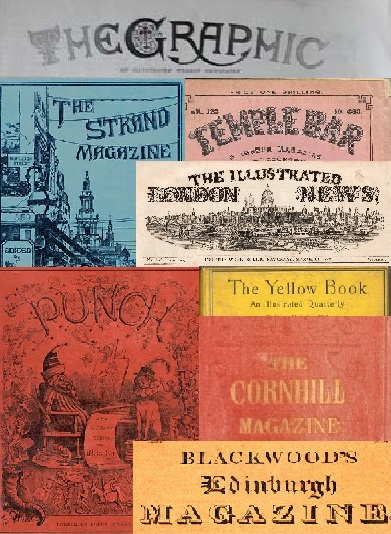
Required Texts
Richard Altick, The English Common Reader
Charles Dickens, Hard Times (Broadview, 1996)
Mary Elizabeth Braddon, The Doctor's Wife (Oxford, 1998)
George Eliot, The Mill on the Floss (Broadview, 2007)
Thomas Hardy, The Return of the Native (Penguin, 2008)
George Moore, Esther Waters (Oxford, 2012)
|
The nineteenth century saw the expansion of reading as a result of educational initiatives, the reduction in the cost of printed material, and the rise of the popular magazine. In the pages of those magazines, alongside scientific discoveries, news stories, and articles about a wide variety of timely topics, appeared the major novels of writers such as Thomas Hardy, Charles Dickens, Mary Elizabeth Braddon, Wilkie Collins, and Elizabeth Gaskell: the Victorian novel that we read and study was originally a serialized form that engaged with the same issues that were tackled in the essays and cartoons that appeared alongside them in the popular magazines. This course is designed to reconnect novels with these original contexts, as we consider (1) the novel as an archive of culture and (2) the magazine as a site for the construction of particular readerships in the nineteenth century.
This course takes a cultural studies approach to literary criticism, using primary sources to investigate Victorian fiction. Following our discussion of each novel, the class will come together to generate a series of research questions arising from our discussion that students will then individually investigate and “answer” by using the evidence provided by the period’s popular magazines. During the next week, students will conduct their research independently and in small groups, searching the periodicals for the evidence that will explain why the novel in question may have taken up particular issues or how the fictional representation of a topic or figure might have reflected a larger cultural concern of the moment. Students will write up their findings and present them in class. In their final projects students will have the opportunity to return to one of their short research reports and to expand it into a larger study (of that issue over a wider period of time or across multiple magazines). They will have the option of working independently to develop a 10-page paper, with secondary research, or to work together to create a modest web site that communicates their discoveries to a wider audience. By the end of the semester, students will have a deeper understanding of the reading practices, literary issues, and social concerns of the nineteenth century.
This course has been designated a CREATTE course: students will be enrolled in a zero hours research section and will be invited to present their work at the USF Undergraduate Research Colloquium at the end of the semester.
Assignments
The hard-working students in this course will also do a good deal of formal writing. Following our discussion of each novel, the class will generate a series of research questions that students will individually “answer” by using the evidence provided by the period’s popular periodicals. These answers will take the form of four or five short (5 page) commentaries that introduce material discovered in a Victorian magazine and explain its relevance to the novel under discussion. These discoveries and insights will be shared in class. There will also be a final project that will be presented to the class at the end of the semester.
|